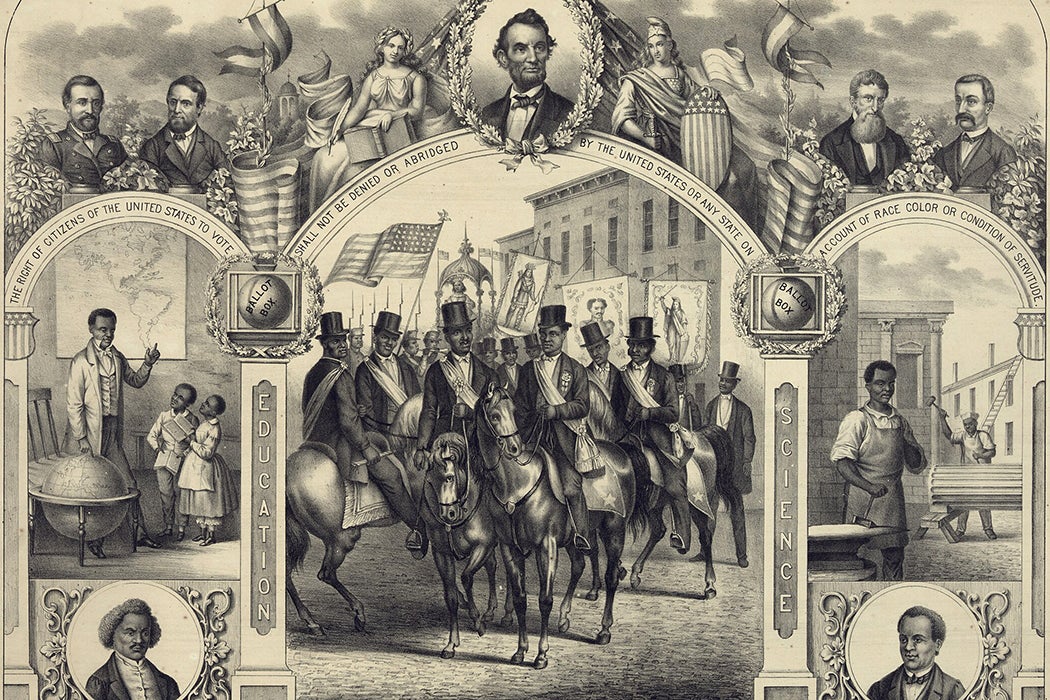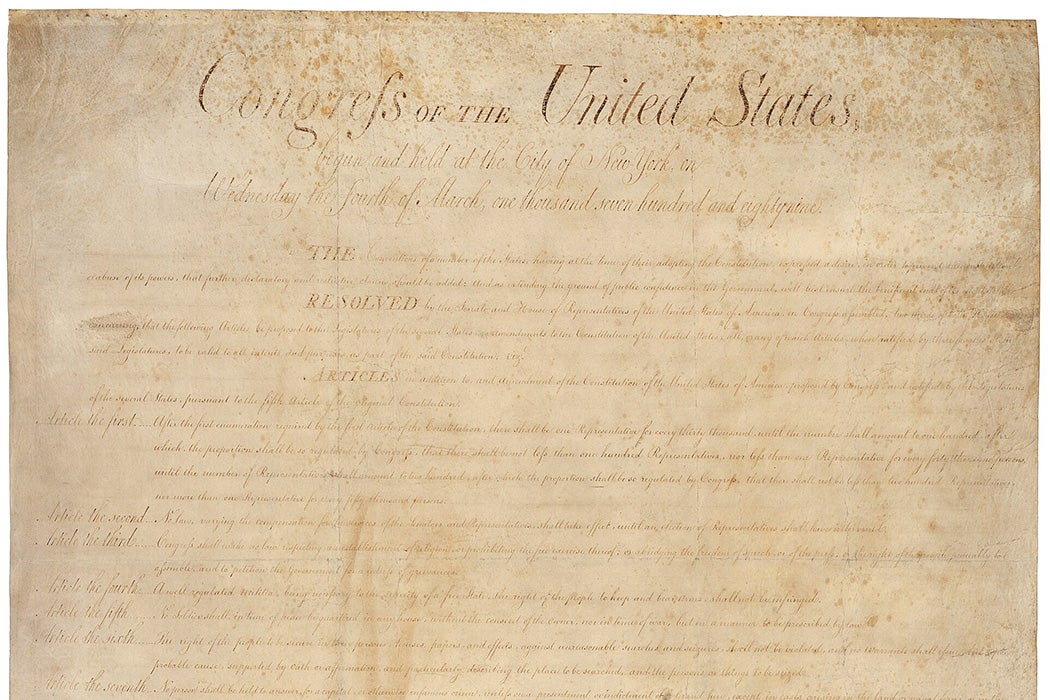The Fifteenth Amendment of the US Constitution was the last of three amendments made after the end of the Civil War as part of the Southern Reconstruction. The thirteenth and fourteenth amendments, adopted in 1865 and 1868 respectively, abolished slavery as well as involuntary servitude (with an exception for punishment of convicted prisoners) and established birthright citizenship and reiterated the rights to due process and equal protection for all.
Ratified in 1870, the Fifteenth Amendment is short, a mere fifty words including the section headings, but with a large intended effect. It prohibited the federal as well as states’ governments from barring their citizens from voting based on “race, color or previous condition of servitude.” In other words, the newly freed men in the South were to be allowed to vote (women, regardless of their race or other characteristics, would be waiting another fifty years) without interference.
The southern states were resistant to all three amendments. The methods that were used to prevent Black formerly enslaved men from voting were diverse: “grandfather clauses” that allowed only those with relatives who were eligible voters prior to 1865 to cast ballots; poll taxes that were unaffordable to many; literacy tests that were deliberately obtuse and graded arbitrarily; and voter intimidation by members of white supremacists groups including the Ku Klux Klan, the Red Shirts, and the White League.
Weekly Newsletter
While cases were brought to the US Supreme Court seeking to enforce the Fifteenth Amendment, most decisions found these state laws legal, as they didn’t discuss or impose racial requirements on their face (despite their selective application and enforcement). The suppression of Black voters well into the twentieth century was only ended (for the most part) with the passage of the 1965 Voting Rights Act (VRA), after a long and dangerous fight that saw multiple incidents of deadly violence against those advocating for equal access to the ballot.
More to Explore
The Bill of Rights: Annotated
However, the VRA itself has seen accelerating challenges over the past sixty years that have left it as a diminishing shadow of itself. The Shelby v. Holder County decision struck down the provisions of Section 5, which required states with a history of discrimination to present changes to their voting law for clearance by the federal government. Subsequent decisions have continued to narrow the scope of the VRA’s impact, leaving Section 2, which concerns the federally mandated redistricting process, the last portion standing in full.
On October 15, 2025, the Supreme Court heard the re-argument of Louisiana v. Callais, which challenges Section 2 on the grounds of voter discrimination, in this case against self-declared “non-African-American voters.” The brief submitted by those voters alleges that Section 2 violates both the Fourteenth and Fifteenth Amendments, as it discriminates against white people by requiring districts to be drawn in such a way as to remedy discrimination against Black citizens—even as the preamble of the Voting Rights Act itself claims it was designed “to enforce” the Fifteenth Amendment.
Below is the text of the Fifteenth Amendment, annotated with scholarship from JSTOR to provide historical context and research. As always, these works are free to read and download.
Section 1. The right of citizens of the United States to vote shall not be denied or abridged by the United States or by any State on account of race, color, or previous condition of servitude.
Section 2. The Congress shall have power to enforce this article by appropriate legislation.








